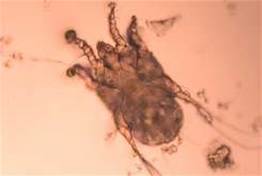Ear Mites
|
Ear mites are tiny parasites that live in the ear canal and around the back of the head in affected animals. These mites bite the skin causing intense itching and possibly secondary ear infections or hematomas.
Ear mites are diagnosed by your veterinarian using an otoscope- this is a tool that allows a magnified view of the ear canal. Microscopic exams of ear discharge can also detect ear mites. Ear mites spread from pet to pet when they have close contact with one another- cats are most susceptible, but dogs can also be affected. Ear mites are not contagious to people. If one pet in a household is diagnosed with ear mites, it is advisable to treat all of them at the same time so that they don't re-infect each other. Symptoms:
Treatment: Your veterinarian can prescribe a medication to kill the ear mites. Antibiotic drops may also be necessary if a secondary bacterial infection is present. |


